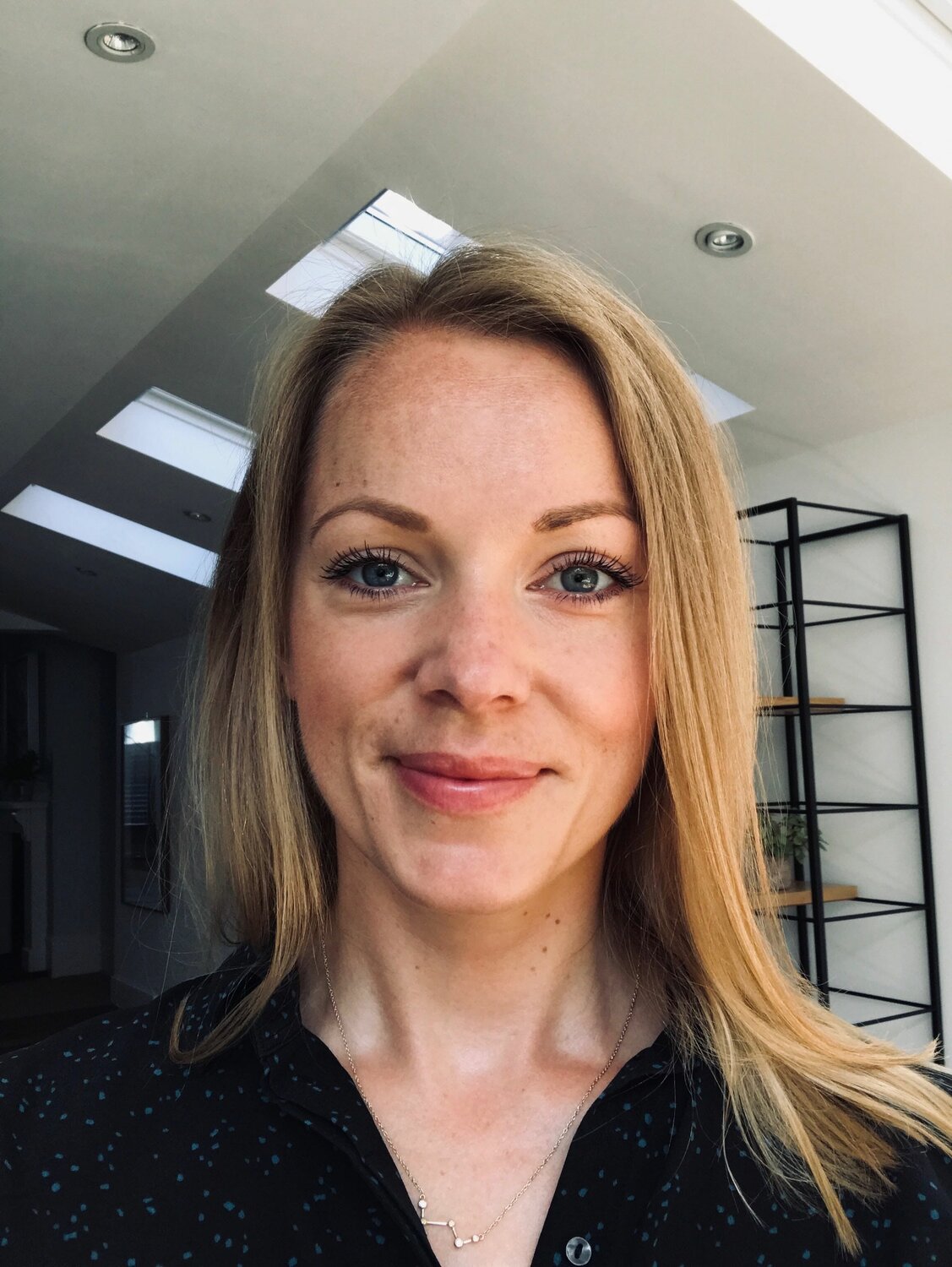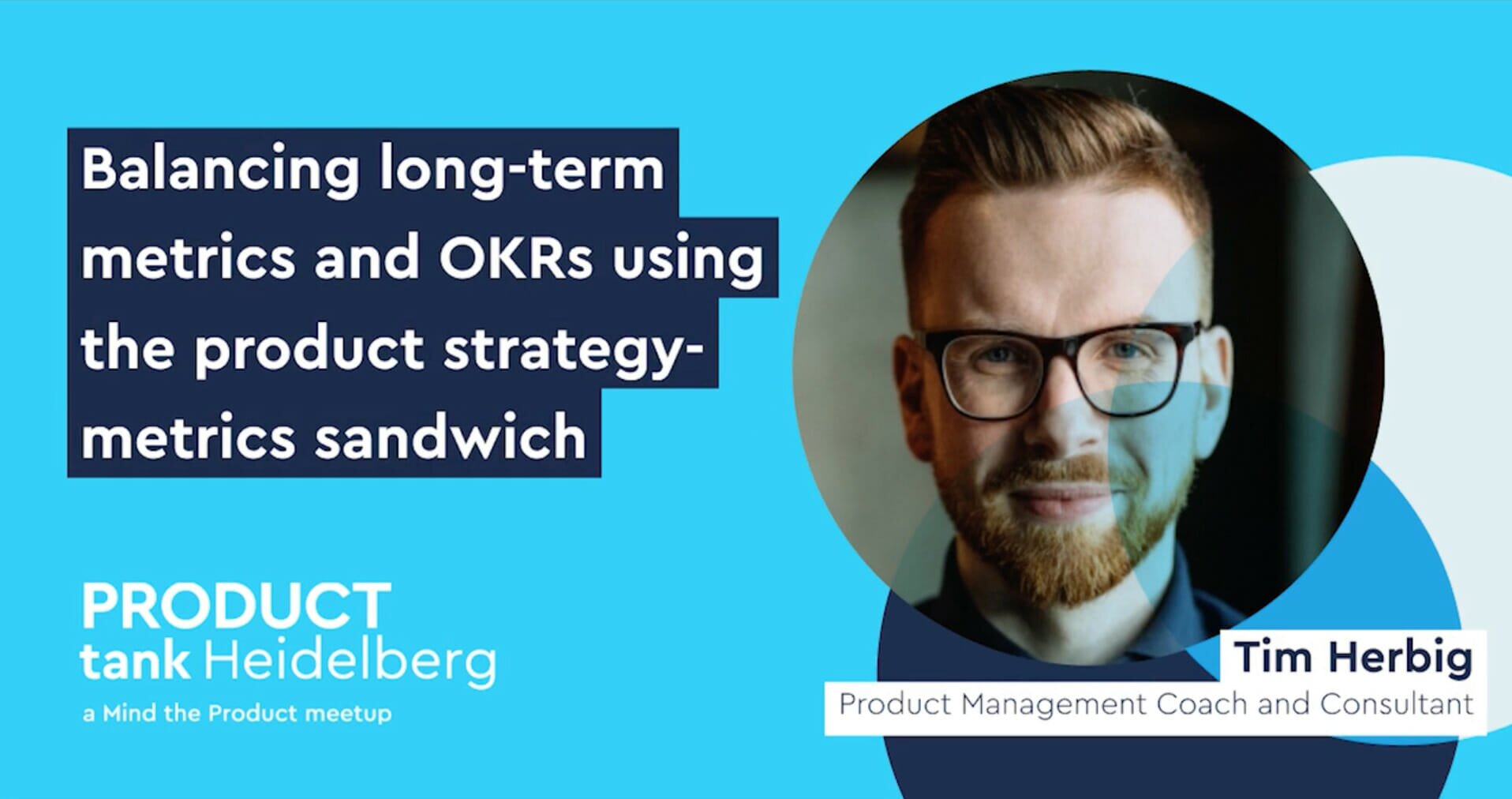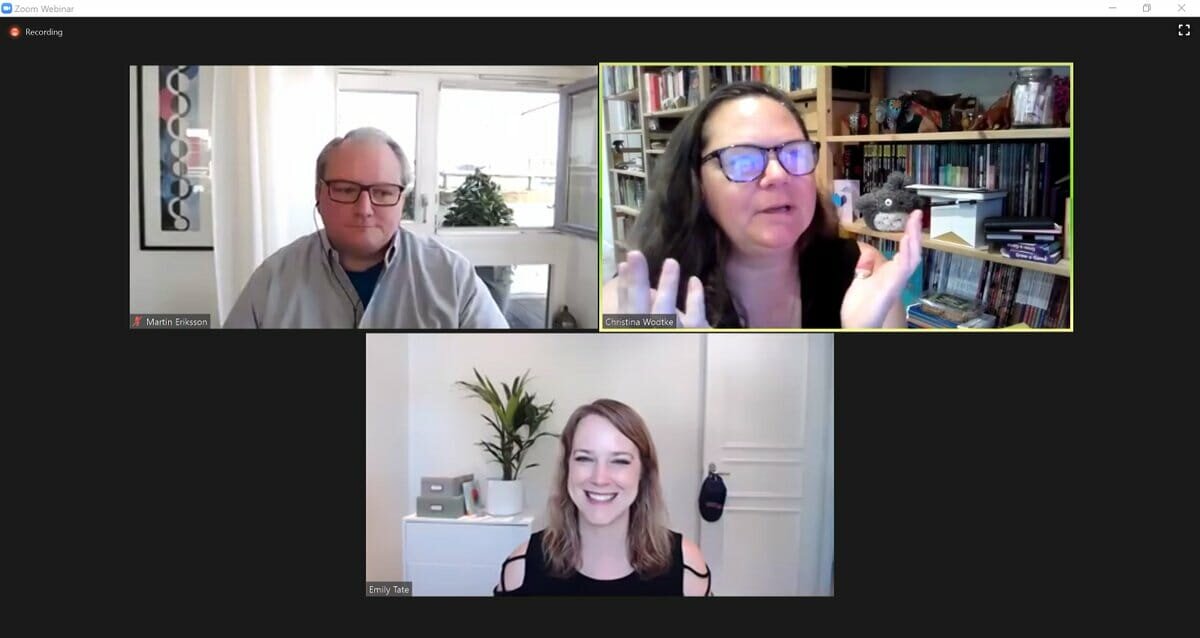In this Prioritised AMA, Christina Wodtke – the amazing author, speaker, and lecturer at Stanford, answers questions on her books, how to encourage autonomy, writing OKRs successfully and even reviving them when they've failed. If you're a Prioritised member you can watch again now and read the full recap. Not already a member? Sign up to get in on the action.
Christina's resume includes re-design and initial product offerings with LinkedIn, MySpace, Zynga, Yahoo! and others, as well as founding three startups, an online design magazine called Boxes and Arrows, and co-founding the Information Architecture Institute.
She uses the power of story to connect with audiences and readers through her worldwide speaking engagements and her Amazon category-bestselling books. Her bestselling book, Radical Focus, tackles the OKR movement and startup culture with an eye to getting the right things done. Her other books include The Team that Managed Itself, Information Architecture: Blueprints for the Web and Pencil Me In (on visual thinking for the workplace).
Topics & Questions
- What motivated you to write The Team that Managed Itself?
- Why is autonomy so important to high-performing teams?
- How can you encourage autonomy if you're not a leader?
- When it comes to autonomy, where do you start?
- Why the love-hate relationship with OKRs?
- Putting OKR metrics and numbers on discovery activities feels counterintuitive, how should you manage that?
- Are leaders and teams getting the hang of OKRs now?
- How do you revive support for OKRs when they've repeatedly failed?
- In an organisation where OKRs are set for product managers (top-down), how do you know which to focus on?
- Should an organisation avoid having both a roadmap and OKRs at the same time?
- How can you help people to embrace autonomy when they've been stuck in a command and control situation?
- Limiting OKRs to just a few – how do you ensure you do what's important and also not drop things?
What motivated you to write The Team that Managed Itself?
I did a lot of phone consulting where people asked me about OKRs. They'd say 'well how do you do this with OKRs?' and 'how do you do that with OKRs?'. I realised that trying to understand where they fit into a larger management strategy, is really hard for a lot of folks. And so through those conversations, through consulting work, and with working with teams a model came forward.
I decided that I would write it NaNoWriMo (National Novel Writing Month) where you write an entire novel in November.
I wrote the first draft, hated all of it and gave it to my editor Cathy Yardley, who then got breast cancer. She then beat breast cancer, but we had to put it on the shelf for a couple of months. I continued to consult with people while she recovered, which I'm so grateful for, and then we attacked it again. This time, I was able to make something that I'm really proud of. I think it's the hardest book I've ever written, but I also think it's the best book I've ever written.
Trying to write real fiction, rather than a parable, about a small game company where my lead Ally is finally promoted to be general manager of a team, except her old boss steals all her best people and now she has figure out how am I going to be a manager, how am I going to set goals, how am I going to hire effectively? How am I going to get people to be autonomous because nobody scales – she doesn't scale.
It really came out of so many questions from so many clients and so many people feeling confused about how to run a strong autonomous team.
Why is autonomy so important to high-performing teams?
The first reason is simply that as a leader you just do not scale. So the idea that you're some sort of puppet master who's going to manage every single little activity of every single person that works underneath you is ridiculous.
Reason two is that you don't have all the answers. I don't care how super genius you are, there are people who have different lived experiences and different insights. I'm a big fan of the first among equals approach to management where you respect everybody. You trust that they have the knowledge and insights and by empowering them you just get better results than you could by yourself. You waste a ton of time in hiring the best people only to tell them what to do.
How would you get started with building autonomy? Especially if you're not the leader?
Luckily or unluckily I come from a design background and if you know anything about designers you know they have no power. From there, I went up to that very powerful role of Product Manager – I think the book Influence Without Authority is written for product management! I've learned that you don't get things done by telling people what to do. That's the worst way. If you're leading, you lead with influence, you lead through social capital.
To have an autonomous team, the first thing you have to start working on is managing up. Say you report into somebody who is giving you some goals. Start thinking about how to turn those directions into conversations about how your success is mutually linked.
The other thing to do is remember you can ask for things. You know, we say women don't ask but I think most people probably don't ask for a lot of things they need. So if I see somebody who's extraordinary, like a really great engineer that I think is really passionate about working on what I'm working on, I would go to my boss and I'd say, what would it take to have this person work with us?
It's terrifying to have those conversations but it's when you take the courage and find the strength to have those honest conversations with people, you can do almost anything. I always recommend the book Difficult Conversations just to get you started on how you help people when their behaviour isn't serving their goals. That's a big step towards autonomous teams because autonomous teams need to be able to self regulate and in order to be able to self regulate you have to be able to give feedback to each other, and improve bad team dynamics.
When it comes to autonomy, where do you start?
I always start with – follow the money.
You really need to know how are people incentivised. So, for example, I tried to figure out, how does my boss, or the engineer or designer I work with measure success within their group because my job is to make everybody successful.
This is a great way to lead to social capital and you have to build social capital before you can do anything. And then as a general manager, the first thing I would do is optimise whatever I was working on for speed. Because, if I make things run faster, all the numbers go up, and then I'd have that first win. Everybody forgets to optimise for speed, and so, every few months, things get slower and slower.
I come in fresh, and I say ok, number one thing we're doing is we're cleaning this up so it goes a lot faster. Then the boss thinks you're magic because you've made the revenue go up or the conversion goes up – that's what happens when things run fast. And then once I got that really quick trick in my back pocket, then I've earned a little social capital and I could start making asks.
Why the love-hate relationship with OKRs?
It just was really demotivating to have people like Philip Morris or Walmart saying: 'how can we use OKRs to squeeze a couple more cents of profit out of our teams?' and that's not what I thought OKRs were for. When you have a meeting with somebody who says 'why can't our OKR just be: make $5 billion next year?' I say leave OKRs out of it, please. It was just very very painful and frustrating.
I wrote a really short book, I would give it out for free, like popcorn at the movies, and people would still just want to get a little more blood out of the stone.
I did find that working with companies who my values align with made me realise I was blaming the tool for a lot of the bad stuff that was happening. A lot of the software that sprung up around OKRs popularity was also upsetting. There's a reason I don't recommend software for OKRs and it's because most of it is just managing people's everyday day-to-day tasks.
I think so much of management is sort of the panopticon. There's this desire for control, and that's literally the opposite of what OKRs are for – Marty Cagan has written a lot about this as well.
Putting OKR metrics and numbers on discovery activities feels counterintuitive, how should you manage that?
The secret to writing an OKR is really – what do you want to happen?
For example, for an OKR related to discovery, think about why you are doing discovery. What are you hoping to find out? What are you looking for? You're not doing discovery just because discovery is fun. You're doing it because maybe you want to find a new business model or a new market, or to figure out what that new market wants.
Your OKR objective is, for example – figure out how to make money on this awesome thing that we love doing and the KR is X number of people who are willing to pay this much for it.
That tiny little beating heart of OKRs is: what do I want to see happen in the world and how do I know if it's working. If you can do that, then you can change your OKRs, so many different ways and they can be this north star, guiding you forward to the vision you have.
Are leaders and teams getting the hang of OKRs now?
I don't feel like I have enough data to speak to a true majority […] It sounds like there are people who get it, but still struggle to help their boss get it, or part of the company gets it while another part doesn't etc.
There are also people who are trying to use it in some ways that make it hard to be successful. For example, it's really hard to do it as a service team and it's really hard to do it as a consulting company. It can be done, but it's hard.
As I read essays, I see people making a lot of mistakes that are likely to cause them to not get all the benefits of OKRs. There's a lot of people doing task-based results which is a huge mistake because you can do all the things and still fail. So you always want to be results-oriented.
The biggest thing that I still see people do is 'set and forget', and that one breaks my heart. At the beginning of the quarter they go 'ok, this is what we want to see happen' at the end of the quarter they show up and say, 'ok, let's see the results'. You can't do it that way. You have to measure every single week – that's so important. Just checking in every single week works so well at improving both learning, and execution. That cadence is so valuable.
How do you revive support for OKRs when they've repeatedly failed?
My advice really depends on what they're trying to do. A lot of people try to roll out OKRs across an entire company from the start and they are just going to have a bad experience, period. I recommend holding back on it.
A lot of people want to use OKRs on their worst-performing team because they think if they just add OKRs to a bad team that that will magically fix things – to this I say, no, please start with OKRs in your best team. The best team is interested in being good and will grow and will figure it out. Then you can take those learnings from the best team to the rest.
I've also seen people recover by using OKRs just on projects. That teaches you the habit of results-oriented thinking, So, if you had a failure, pull back and try a lighter weight version of OKRs.
In an organisation where OKRs are set for product managers (top-down), how do you know which to focus on?
That's a problem but you're a Product Manager – do you get to change the fact that you've been handed top-down OKRs? No.
If you have built up that social capital maybe you can have a nice chat with whoever it's coming from, but that can be a dangerous prospect in general and so I try not to do it unless I think the entire company's going to burn down if things go sideways.
I prefer to say ok, I've been handed these OKRs let's have a conversation to ask why I'm being given these OKRs. And then I try to make sense out of these OKRs. For example, if I'm given something that's very metric oriented, I'm like okay, $5 million in revenue, what does that revenue tell us? I do this because sometimes bosses are like all of us, we're very solution-oriented.
So if you can walk backwards from that thing that they're throwing at you and say, 'what's going on here?', 'what do they actually want?', then you can start to make sense of it.
After that, when you're talking to your boss, you can use this sense to try to move people from whatever crappy or scattered thinking they're giving you with the OKRs to a clearer way of thinking. Believe me, if you do it elegantly, it will raise your capital as well, and you might even get your promotion. I've been promoted by doing that. You never know!
Should an organisation avoid having both a roadmap and OKRs at the same time?
A roadmap should be more about things we're doing to achieve our OKR. I prefer pipelines over roadmaps but roadmaps are usually committed and pipelines are usually 'here's the pile of stuff we think might affect the metrics'. So, once you have clean OKRs, you should be able to come up with a lot of things you think you can do to hit them.
This gets into timescales when you're a tiny company. Three months is fine if you're small, but if you're working with a bigger company we're talking about having OKRs for the year and then you can theme each quarter to get to that end result.
This is classic product management stuff but essentially, don't let the tail wag the dog. Make sure you start with the OKRs and then move on to your pipeline, or your roadmap.
How can you help people to embrace autonomy when they've been stuck in a command and control situation?
Go slow. Changing teams takes time.
I recommend the book, The TAO of Coaching. It talks a lot about how to move people from doing what you tell them to do, to giving you answers.
I also wrote about this topic in Working the Weekly 1:1 where I talk about a system that's called GROW. This involves constantly avoiding giving answers to slowly teach people how to be autonomous.
With teams, you have to pick who looks like they're going to be able to grow into it, and some people won't.
When I first managed, I had a team of designers and I thought all designers were more or less alike. I thought they were all creative people who would assault new things and I had this one woman who just made banners. That's what she did and so I thought ok, we're going to rotate everybody's position.
We had the banner lady work on this new project and a guy who was an out of the box thinker made banners for a couple of weeks. Oh my gosh, what a mess!
Everybody should have the chance to grow into what they can, but as a manager, you also have to respect that maybe she just wants to come to make some beautiful banners, go home at five o'clock – not everybody wants work to take over their entire life. And those people are really valuable because those damn banners aren't gonna make themselves and it breaks the heart of somebody who doesn't like it.
So, as a manager, there are things you can do to help grow the people who want to grow in that way, but also there are things you can do to support the people who make the company work – you need both those kinds of people.
Limiting OKRs to just a few – how do you ensure you do what's important and also not drop things?
Well, there's the first problem. OKRs aren't everything you do, they're the one thing you're worried you won't do.
People think of it as a way of managing all the activities and it really shouldn't be.
OKRs are most powerful when we go back to the old Eisenhower matrix, which is important and urgent, there are all these things that are really important but they're not urgent, and they don't get done. And things are unimportant, but urgent that do get done.
Life is so full of distractions that we often forget to do this really critical strategic thing so OKRs are a way of making important things urgent by saying we're doing them now and we're doing them in this timeframe. But there's also a bunch of other things you still have to do.






